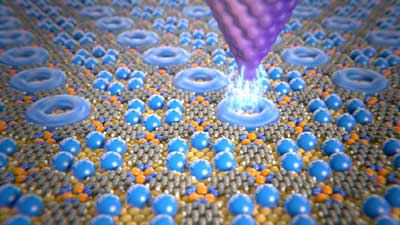 Scientists have reported a new method that allows the physical state of just a few atoms or molecules within a network to be controlled. It is based on the spontaneous self-organization of molecules into extensive networks with pores about one nanometer in size.
Scientists have reported a new method that allows the physical state of just a few atoms or molecules within a network to be controlled. It is based on the spontaneous self-organization of molecules into extensive networks with pores about one nanometer in size.
Dec 17th, 2018
Read more
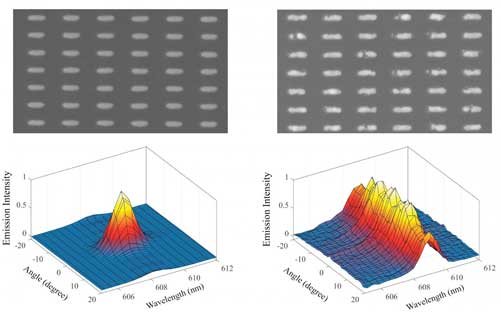 Researchers have developed a new type of low-energy, nanoscale laser that shines in all directions. The key to its omnidirectional light emission is the introduction of something that is usually highly undesirable in nanotechnology: irregularities in the materials.
Researchers have developed a new type of low-energy, nanoscale laser that shines in all directions. The key to its omnidirectional light emission is the introduction of something that is usually highly undesirable in nanotechnology: irregularities in the materials.
Dec 17th, 2018
Read more
 International research team shows how pure graphene efficiently converts light into electricity.
International research team shows how pure graphene efficiently converts light into electricity.
Dec 17th, 2018
Read more
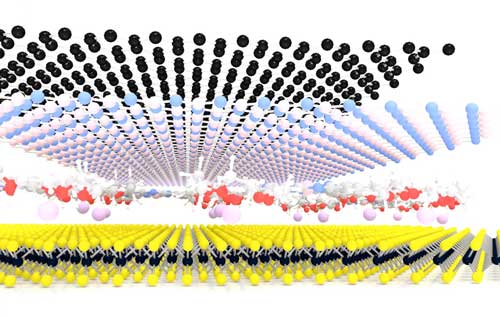 Developing next-generation electronics based on all two-dimensional materials.
Developing next-generation electronics based on all two-dimensional materials.
Dec 17th, 2018
Read more
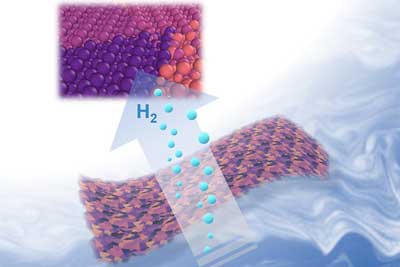 The inexpensive new material can split water just as efficiently as costly platinum.
The inexpensive new material can split water just as efficiently as costly platinum.
Dec 14th, 2018
Read more
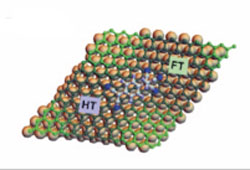 Researchers have demonstrated that graphene deposited on a metal surface promotes an unusual chemical reaction that would hardly take place under noncatalyzed conditions.
Researchers have demonstrated that graphene deposited on a metal surface promotes an unusual chemical reaction that would hardly take place under noncatalyzed conditions.
Dec 14th, 2018
Read more
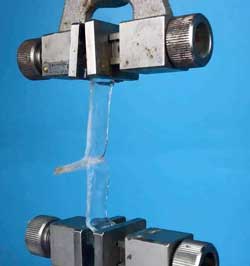 Pulling off a Band-Aid may soon get a lot less painful.
Pulling off a Band-Aid may soon get a lot less painful.
Dec 14th, 2018
Read more
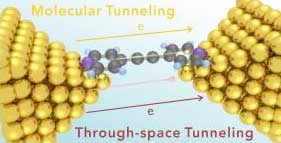 Monitoring the transition from tunneling leakage current to molecular tunneling.
Monitoring the transition from tunneling leakage current to molecular tunneling.
Dec 14th, 2018
Read more
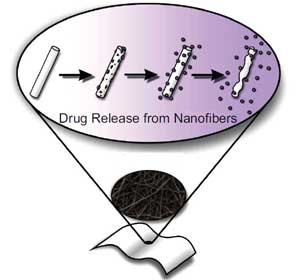 Researchers demonstrate the use of electrospun polymeric nanofibers as an interesting method for drug delivery systems applications.
Researchers demonstrate the use of electrospun polymeric nanofibers as an interesting method for drug delivery systems applications.
Dec 14th, 2018
Read more
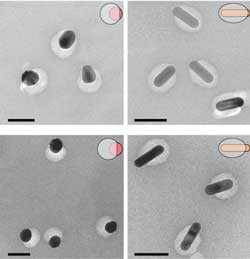 A new technique allows scientists to build custom coats for nanoparticles in all kinds of specific shapes.
A new technique allows scientists to build custom coats for nanoparticles in all kinds of specific shapes.
Dec 14th, 2018
Read more
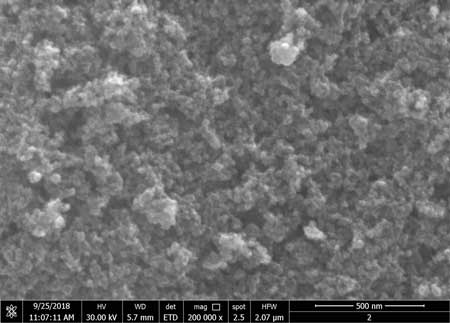 A novel method to produce black iron oxide nanoparticle slurry having a magnetite structure and homogenously disperse. It can be used as formed or mix with another medium.
A novel method to produce black iron oxide nanoparticle slurry having a magnetite structure and homogenously disperse. It can be used as formed or mix with another medium.
Dec 14th, 2018
Read more
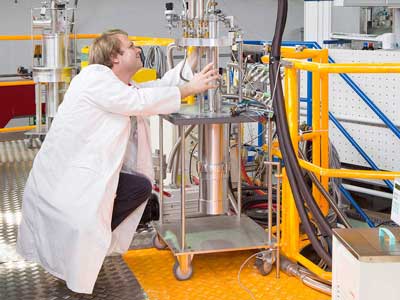 Novel phase change memory materials can work a thousand times faster than current flash memory chips, while being significantly more durable.
Novel phase change memory materials can work a thousand times faster than current flash memory chips, while being significantly more durable.
Dec 13th, 2018
Read more
 It's not quite the Ant-Man suit, but the system produces 3-D structures one thousandth the size of the originals.
It's not quite the Ant-Man suit, but the system produces 3-D structures one thousandth the size of the originals.
Dec 13th, 2018
Read more
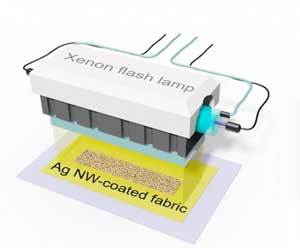 Scientists have found a cost-effective way to make thin, durable heating patches by using intense pulses of light to fuse tiny silver wires with polyester.
Scientists have found a cost-effective way to make thin, durable heating patches by using intense pulses of light to fuse tiny silver wires with polyester.
Dec 13th, 2018
Read more
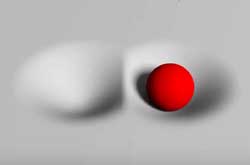 Discovery of atomic-scale binary logic powers faster, more energy-efficient electronics.
Discovery of atomic-scale binary logic powers faster, more energy-efficient electronics.
Dec 13th, 2018
Read more
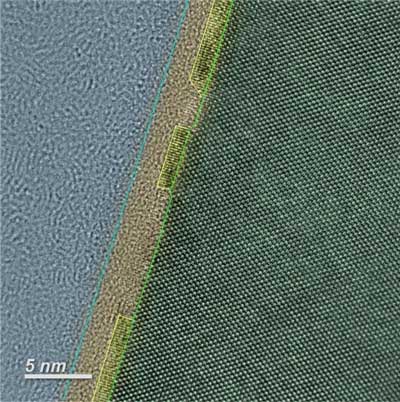 Physicists have for the first time described in detail the dynamic phenomena occurring at the interface between a ferromagnetic metal and a semiconductor.
Physicists have for the first time described in detail the dynamic phenomena occurring at the interface between a ferromagnetic metal and a semiconductor.
Dec 13th, 2018
Read more
 Scientists have reported a new method that allows the physical state of just a few atoms or molecules within a network to be controlled. It is based on the spontaneous self-organization of molecules into extensive networks with pores about one nanometer in size.
Scientists have reported a new method that allows the physical state of just a few atoms or molecules within a network to be controlled. It is based on the spontaneous self-organization of molecules into extensive networks with pores about one nanometer in size.















 Subscribe to our Nanotechnology News feed
Subscribe to our Nanotechnology News feed